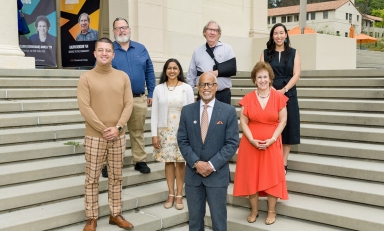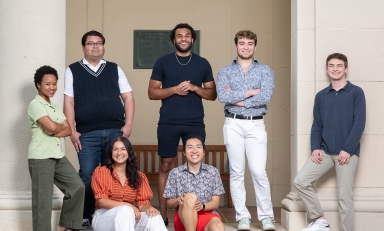Using a case study of skin-whitening beauty products, a three-year, $479,480 National Science Foundation grant will fund an Occidental study of how the intersection of race, immigration status and other identities shape public understanding of science in the United States.
As principal investigator, Bhavna Shamasunder, associate professor of urban and environmental policy, will lead the study in Los Angeles, New York and Minneapolis/St. Paul to better understand the widespread use of potentially toxic skin bleaching products.
“We want to explore the social, political and cultural rationales of women in diverse communities who use these products, and how the public health and scientific communities might incorporate intersectional issues to more effectively inform the public about the risks involved in their use by considering drivers of product use in public health messaging,” says Shamasunder.
The skin-bleaching cosmetics market is a $6 billion global industry that continues to grow despite a substantial body of scientific evidence of health problems associated with their use and public campaigns to curb their sale. Growing attention has been directed at this market as part of America's reckoning with structural racism, as skin lightening product sales are linked with preferences for light skin (colorism) and racism.
Particularly problematic are those products that contain mercury, a neurotoxin that can cause serious reproductive and developmental harm. While the U.S. Food and Drug Administration set a limit for mercury of less than 1 part per million in cosmetics in 1974, growing evidence suggests potentially harmful effects of replacement ingredients such as corticosteroids and hydroquinone. Also of concern are less considered consequences such as mental or emotional stressors shaping product use.
The study will examine the skin lightening market, mercury’s continued use as an ingredient, and market efforts to maintain global sales. Shamasunder and her team also will examine how diverse communities perceive scientific and public health information about chemical toxicity, why consumers purchase skin lightening products, and whether and how scientific and public health data influences consumer choices.
The study builds on Shamasunder’s ongoing work on “The Environmental Injustice of Beauty” that examines how synthetic chemicals in beauty products may be an unexamined contributor to health disparities among women of color.
The study team includes a partnership with The Beautywell Project and the Gender, Equity & Environment Program of the Sierra Club. The project will include the mentoring and training of Occidental students in environmental health mixed methods and community engaged research, and the development of a new undergraduate course at Oxy. Research findings will be broadly disseminated to community, civil society, government and other groups working to address environmental health issues related to beauty products.




